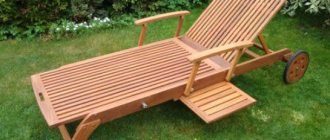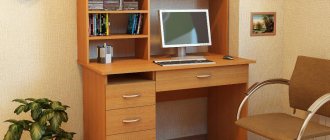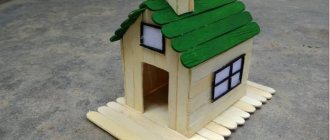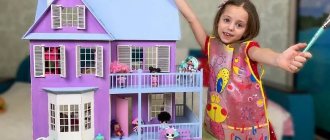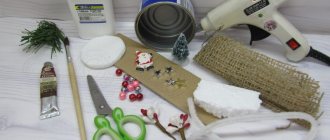DIY aviaries and cages for pheasants
Pheasant is a bird of the pheasant family, caring for which does not present any special problems.
If you decide to engage in game breeding, then you should pay attention to pheasant breeding - this is a very promising area. Care and maintenance are almost no different from caring for ordinary chickens. There is even an additional plus - they hunt pheasants. Therefore, many breeders raise pheasants in order to supply them to hunting farms in the future. At the beginning of the 16th century, the first attempts at artificial breeding of pheasants were made in Europe. And in England it was bred not only for hunting, but also in parks - as an additional element for decorative purposes, to please the eyes of vacationers.
The most convenient way to keep pheasants, both for them and for the breeder, is an aviary.
Features of pheasant breeding
The pheasant is a wild bird, and unlike chickens, which can be released to roam around the yard, pheasants must always be kept in closed enclosures. The aviary allows the birds to move quite freely, but at the same time does not allow them to fly away. In order for pheasants to live comfortably in an enclosure, the following nuances must be taken into account when building it:
- The aviary is located in a dry, sunny place, and preferably on sandy soil. If the soil is clayey, it is covered with a layer of fine gravel or river sand 30-40 cm thick.
- The top of the enclosure is made of mesh. Frightened pheasants tend to fly vertically upward and can be injured on hard surfaces. It is preferable to choose a mesh made of rope or nylon.
- Non-decorative pheasant species prefer stairs, perches, snags or just bushes, and they must be in the enclosure. Houses in enclosures are needed only for diamond or gold pheasants.
For one bird a minimum of 1.5 m is required, and for a pair - 9.5 m of area.
Pheasants are very shy, and in order for the bird to retire and rest, the back wall of the pheasant coop is made blank.
Like any other exotic bird, pheasants are very difficult to breed. The first thing you need to start with after purchasing young animals is the formation of pairs. Depending on the breed, they can be polygamous or monogamous, so before building an enclosure you must take this fact into account, otherwise constant fights for the female cannot be avoided. Thus, settlement should be in pairs or at the rate of 1 male for 4 females.
It is necessary to pay attention to the fact that males from different families cannot meet in open areas (pheasant fights sometimes end in the death of one of the birds). Inside the enclosure, you must make a secluded place for females, in which they will lay eggs and hide from aggressive individuals.
Many breeders install blinders on laying hens to prevent egg pecking. Well-developed peripheral vision will allow them to function normally, but they will not be able to harm future offspring.
Birds do not tolerate noise and loud sounds well, so the aviary should be installed away from other animals and sources of noise. They remember well the color of clothing and the behavior of the breeder, so you need to come to the enclosure in the same suit, without unnecessary movements or loud sounds.
DIY bird aviary
Let's consider the option of an enclosure measuring 6m x 2m (an enclosure with three compartments). On a level place, first we place a foundation made of concrete or lay out about 30 cm of stone. Then we place a 50mm x 100mm beam on the foundation, fastening it with metal corners at the corners of the perimeter. We assemble a frame from 50mm x 50mm timber and reinforce it with wooden corners from boards. We cover the back wall with clapboard, the bottom of which is covered with pieces of slate (on the roof of the foundation). We cover the remaining walls with a metal mesh, cell size 250mm x 250mm. We secure the mesh elements together with metal brackets. The wall, made of clapboard, is covered from the outside with slate or any other waterproof material.
We cover the top with a mesh, as shown in the video.
Or we make a roof from any suitable material, for example, boards and slate.
After the construction of the enclosure, it is treated with bleach, and the birds are introduced no earlier than 5 days after disinfection. Additional equipment will require feeders and drinkers.
The goal of the enclosure is to make the bird feel as comfortable as possible; it must be spacious. This is how it differs from a cell. The aviary assumes, first of all, that the bird has personal free space. When building an enclosure, it must be taken into account that one pheasant during mass breeding needs from 2 to 5 square meters. If birds are raised in families, then 2 square meters per bird will be enough. Aviaries come in several types. The simplest and most convenient is an area fenced on 4 sides, covered with a mesh on top.
Do not forget that pheasants fly up quickly, so they can seriously damage their wings or get injured if, for example, there is a wooden roof on top instead of a net. On top you can use a regular poultry house net, or a little thicker one so that the upper part can withstand the sudden takeoffs of pheasants. Also, do not forget about snow - a large volume of snow can also cause the mesh to break.
Important! In an open enclosure, the bird feels uncomfortable: it has nowhere to hide from precipitation, strong wind or scorching sun. To do this, shelter should be provided in the enclosures. The bird loves warmth, dryness, and sun.
Construction of an aviary
Having chosen a place for the enclosure, they outline the outline of the future building, remove the top layer of soil, and cover it with a two-centimeter layer of slaked lime. A ditch is dug along the perimeter to a depth of 50 cm and a width sufficient for laying timber. Mix cement with sand, lay the beams in the dug ditches, and fill them with mortar. Support beams are installed on the foundation: if the roof is planned to be pitched, then the front pair is lowered lower than the rear ones so that the roof subsequently forms a slope.
Be sure to install median supports to prevent the roof from sagging. When building a gable roof, rafters are made, boards are laid as sheathing, and slate or tiles are fixed on it. For pitched and mesh roofs, a sheathing is also constructed, on which the roof is laid or a net is pulled, secured with staples. You should make sure that the points of nails or wires are not directed into the enclosure - when flying, the pheasant may stumble upon them.
The walls are also covered with mesh; if desired, one wall is made of boards. This will create a feeling of security at home, and will also help provide shelter from bad weather. The aviary is divided into sections to make keeping pheasants safe.
It is necessary to put greenery in the enclosure
The floor is covered with gravel or sand, some is sown with plants or cereals, and shrubs are planted. They also make houses or huts for shelter; For pheasants nesting in trees, high perches from poles are built. They place a separate box with ash or sand for bathing, and equip each compartment with feeders and drinkers.
DIY bird cage
If it is not possible to build a spacious enclosure, then you can get by with a cage - it is slightly smaller in size. The cage can be built either from improvised means or from ready-made elements of a fence, lattice, or mesh. For convenience when carrying the cage, you can make handles on the sides. If you want to leave the opportunity to stack several cages on top of each other, then the doors in the cages should be made from the front, and not from the top.
Cages are also used for catching pheasants. In this type of cell, as a rule, one wall is completely movable, with a quickly closing mechanism. Simple cages are also used to transport birds. Such cells are usually small in size. They can be bought ready-made.
Important! If the aviary or cage is not made correctly and is not protected from predators, then a cat, dog, ferret, mink, marten, fox can get into it, and then your bird will die.
Lathing
Speaking about how to make an enclosure for pheasants, it should be noted that after installing the main frame and covering it with mesh, it is necessary to install the roof of the house.
If you are planning a single-pitched roof with a slate covering, then the sheathing must be stretched over the entire area. To do this, beams are attached along the entire perimeter on top of the installed support pillars, after which one additional beam is fixed transversely to the central support, and the other is fixed longitudinally.
Metal sheets or boards should be nailed to these beams. Slate must be laid on top of the resulting sheathing, which is fixed using special slate nails.
DIY pheasant cages
Raising pheasants is a profitable business, but to make a profit you should remember that they need comfortable living conditions. The productivity of birds depends on the living conditions created. They feel best in conditions that closely resemble their natural habitat. Pheasants are raised at home in special spacious cages. They must be built taking into account the characteristics of birds.
Cage care
Cage care is another important requirement for successful pheasant breeding. It is necessary to constantly clean and disinfect the drinking bowls, perches and the cage itself. All that remains from the food and the pheasants being inside the cage is a favorable habitat for bacteria. Clean sand is the key to bird health. If rodents begin to enter the cage, they must be eliminated immediately. The inside of the enclosure boards must be treated with a disinfecting solution. The outer part of the structures is coated with varnish or oil paint to protect the material from deformation.
About
Basic requirements for the cage
A pheasant cage consists of a wooden or metal frame covered around the entire perimeter with fine mesh. You can make any shape of the cell. For a comfortable stay, birds need a large space. The area of the poultry house depends on the number of birds.
Pheasants live in cages in families: 1 male and 4 females. Typically, rectangular buildings are built, which are further divided into several sections.
It is advisable to provide walking areas on the square. Vegetation, such as small shrubs or trees, should be planted around the entire perimeter.
It is better to make a waterproof roof. It will protect the birds from rain and wind.
Before you build a poultry house with your own hands, you should familiarize yourself with the basic requirements for home-made structures:
- To make it more convenient to collect eggs, the cage should contain only the essentials for the birds to live;
- Adults must live separately from young animals;
- The size of the poultry house is approximately 1.5/1 m;
- If there is no provision for walking birds in the warm season, it is imperative to plant rapeseed, sorghum or millet in the poultry house;
- In regions with a warm climate, houses are covered with soft nylon, and a rain cover is installed a little higher;
- To prevent small rodents from getting into the pheasants, it is better to choose a fine mesh; the mesh size should not exceed 1.5 cm;
- In the cold season, as well as in harsh climates, poultry houses are well insulated, since pheasants are heat-loving birds.
Possible enclosure options
The standard material for constructing the frame of an enclosure is wood: such material is solid, durable and withstands weather conditions well. Nevertheless, the frame for a pheasant enclosure can be not only wooden, but also metal: this design is lighter, more compact, and easier to disassemble and assemble.
Important! Some breeds of pheasants must be kept in pairs and not in a flock. These include the king pheasant - the male of this breed is aggressive, he defends his territory and provokes fights with other males: such qualities of the bird make it impossible to keep this breed with other relatives.
In this case, at least one wall is tightly clogged with wood or sheets of metal, or an additional blind wooden outlet is made (the bird needs such shelter in order to hide). The wooden and metal frame is covered with mesh along the entire perimeter, paying special attention to the roof (as a rule, the ceiling of the enclosure is stretched with a double layer of mesh: the lower one is rope, and the upper one is metal).
For additional protection from precipitation, wooden or metal material is pulled over the mesh, which must be removed in sunny, warm weather.
A modern version of the enclosure is a polycarbonate greenhouse: such an enclosure will have sufficient impact resistance, provide excellent protection from precipitation and will maintain constant dryness inside the greenhouse. Polycarbonate greenhouses are becoming increasingly popular: such a house is very easy to build, and it is also very convenient for pheasants.
Check out the popular breeds of pheasants, in more detail with the common pheasant, long-eared, white, golden, royal.
A standard pheasant enclosure is a wooden or metal frame covered with mesh around the perimeter. Often a wooden shelter is added to one side of the enclosure where the birds can hide, or the back wall is made entirely of boards.
Some poultry farmers prefer to use a polycarbonate greenhouse as an aviary, the front and back walls of which are covered with chain-link mesh. Installation of such a structure takes a minimum of time, it is very convenient for birds, and it is always dry and light enough.
The enclosure may not have a roof at all (a mesh is stretched), or it may be made of slate or tiles. If the enclosure is without a roof, then small gable slate canopies are installed inside the enclosure, where pheasants can take shelter in bad weather, or small booths are placed.
Cell material
Before construction, you need to prepare all the necessary building materials:
- For the frame - beams 50/50 mm;
- For the roof - slate or tiles;
- For walls - lathing and rafters 10 cm by 3 m;
- For the foundation - sand, cement;
- For the floor - slaked lime, sand or gravel;
- For fastening - staples and nails.
Before construction, the boards must be treated with a mixture of diesel fuel and bitumen. It will protect the material from pests and prevent rotting.
Step by step instructions
Excavation:
- Select a plot measuring 30 x 6 meters.
- Mark a trench for the foundation measuring 25.2 x 4 meters. Check diagonals.
- Dig a trench 20 cm deep and wide.
- Mark places in the trench for piles in increments of 2.1 meters in length and 2 meters in width.
- Drill holes with a drill with a diameter of 15 cm and a depth of 1.5 meters.
Reinforcement and concrete works:
- Tie 28 reinforcement frames of piles from three vertical rods with a diameter of 10 mm and 5 triangular clamps with sides of 10 cm each.
- Insert reinforcement cages into the drilled holes.
- Install foundation formwork from 40 mm thick boards along the dug trench to a height of 20 cm from the ground. Cover the sides of the boards facing the inside of the trench with film.
- Make rectangular clamps measuring 15 x 35 cm from reinforcement with a diameter of 6 mm.
- Tie the reinforcing frame of a strip foundation (crossbar) with a rectangular section of 15 x 35 cm, placing 3 reinforcing bars with a diameter of 12 mm on the bottom side of the frame, and 2 reinforcing bars with a diameter of 10 mm on the top side. The pitch of the clamps on the frame is 30 cm.
- Tie the vertical pile rods protruding from the wells to the crossbar frame.
- Prepare embedded parts for installing frame columns in the form of square plates made of sheet iron 8 x 120 x 120 mm with “whiskers” welded to them on one side of 4 reinforcing bars with a diameter of 10 mm and a length of 300 mm. The free ends of the “whiskers” should be bent by 50 mm.
- Mark on the formwork the places where the embeds will be installed in increments of 2.1 meters along the long sides and 2 meters along the short sides of the formwork.
- Using a concrete mixer with a pear volume of at least 180 liters, prepare concrete with a composition of 1: 2: 3 (cement: sand: crushed stone). Fill the piles and strip foundation formwork with concrete, vibrating the concrete mixture.
- Install the embeds into the fresh concrete mixture, placing them all in the same horizontal plane.
- After three days, remove the formwork. Remove and remove the plant soil inside the foundation. Bring sand inside the foundation. Compact the sand cushion 15 cm thick with a vibrating plate. Bring sand onto the compacted sand bed and level it flush with the foundation.
Welding work:
- Cut profile pipes 3 x 80 x 80 mm into racks 2 meters long.
- Mark the axes of the racks on the embedded parts of the foundation.
- Weld the racks to the mortgages.
- Weld the top trim of the racks from a 3 x 80 x 80 mm pipe around the perimeter.
- Make half-trusses from a 2 x 50 x 50 pipe, 1.5 meters high, 4.5 meters long with additional racks inside and braces.
- Install the half-trusses onto the top frame of the posts, placing each one above the post.
- Connect the half-trusses together with crossbars made of a 2 x 25 x 50 mm pipe, placing it “edge”.
- Weld inserts from a 2 x 50 x 50 pipe between the frame posts to install window and door frames, supports for covering the frame with metal profiles, polycarbonate, OSB-3.
- Make window and door frames from pipes 2 x 50 x 50 mm. Provide openings for feeders at the bottom of the doors.
- Install window and door frames into the frame on metal hinges. Doors must open into sections.
- Weld the frames of the section partitions.
Roof:
- Cover the roof with a metal profile.
- Cut windows measuring 0.7 x 2 meters in metal profile sheets.
- Cover the windows with polycarbonate, sealing the joints.
Walls:
- Sheathe the bottom of the walls from the outside with sheets of metal profiles to a height of 1 meter on three sides of the frame.
- Sheathe the bottom of the walls and partitions with OSB sheets (OSB-3).
- Install mesh on the top of the walls and partitions.
- Cover the side wall slopes and blind transoms above the windows and doors with polycarbonate.
Windows, doors, ceiling:
- Cover installed windows and doors with polycarbonate.
- Attach a polycarbonate ceiling to the semi-trusses.
- Spring the doors.
Additional work:
- Make and install feeders, houses, perches.
- Install water supply in sections and install nipple drinkers.
- Perform work on lighting the enclosure.
Step-by-step construction instructions
- At the first stage, supports are installed on which the mesh will be fixed. If desired, the supports can be concrete, metal or wooden beams. Concrete pillars are the most durable;
- First, markings are made around the perimeter for supports, then they are securely fixed to the ground. To better hold the mesh, the posts should be in the middle of the house;
- Then the mesh is stretched and secured with construction brackets on the poles;
- In the same way, a nylon mesh is attached to the poles;
- To install a gable slate roof, the entire perimeter of the poultry house must be covered with a single-pitch lattice or rafters;
- After the roof and walls are ready, you need to make a door. For this you need nails and boards. Doors can be made in any way, it all depends on desire and capabilities.
The pheasant cage is ready. Building a poultry house is not very difficult. The most important thing is that it turns out to be practical and convenient. Such a structure will allow birds to be raised safely in a comfortable environment for them. If necessary, the structure can be insulated.
Arrangement of the enclosure
In the walking area there should be feeders and drinking bowls (preferably bunker type). Birds love to relax on the sand and take sand and ash baths. The enclosure should have perches or wooden driftwood for the pheasants to fly onto. You can plant low bushes and trees in the walking area. It is advisable to sow the land with grass or cereal crops.
How to Make Pheasant Cages: Tutorial
When implementing a business for breeding and selling pheasants, the key issue is keeping them at home. Such maintenance requires specific conditions, since a wild bird such as a pheasant requires slightly different approaches compared to other types of domestic animals. Naturally, the specific conditions of breeding this bird at home leave a significant imprint on the fact that cages for pheasants must have a special design.
Aviary treatment
In order to prevent rotting of the wooden frame, the wood must be additionally processed. For these purposes, it is best to use an antiseptic made from bitumen and diesel fuel. It is prepared as follows:
- Bitumen must be placed in a bucket.
- Heat the product to a boil, then remove from heat.
- Add diesel fuel to the liquid in small portions.
The amount of diesel fuel is uncertain, but it should be enough so that the cold bitumen still has a liquid consistency. In this case, you need to pay attention to the fact that it is hot antiseptic that is used to treat wooden products, since it is much better able to penetrate into the structure of the wood, to a depth of almost 7 cm.
After processing, wooden products must dry, which will take 24-36 hours. After this, the structure is treated with oil paint.
Please note that the use of nitro paints and nitro varnishes in this structure is strictly prohibited.
Before applying oil paint, the wooden frame must be primed so that there are no drips left on it. Small gaps are needed on the back wall of the enclosure, which should be entirely made of wood. These birds are not afraid of drafts; on the contrary, they love fresh air.
Features of cell selection
To make a pheasant cage with your own hands, you need to know the type of such structures. A standard enclosure is a wooden or metal base with a mesh around the perimeter. Often a wooden canopy is attached to one side of the structure, under which the birds can hide from the weather.
Some breeders use a polycarbonate greenhouse, covering all the walls with chain-link mesh. Setting up a pheasant cage does not take much time. When constructed correctly, it is comfortable, warm and dry.
If you cannot build an enclosure, then you can easily use a cage that is slightly smaller than the size of the enclosure. You can build a cage from improvised materials or ready-made parts of a lattice or fence. For comfort during transportation, the structures can be equipped with handles on the sides. If you plan to stack the cages on top of each other, then the doors need to be made in the front.
Cages are also often used for catching pheasants. With this type of construction, one wall is made movable with a quick-closing mechanism. Simple cages are used to transport birds. They are made in small sizes. They can be purchased ready-made.
If the cage or enclosure is not made correctly and is not protected from predators, then a cat or other wild animal can easily get into it, and then the pheasant will die.
If you plan to breed pheasants, you need to make high-quality and durable enclosures. You can use the services of companies and order the construction of an enclosure to professionals, or purchase a ready-made option.
Required tools and materials
An enclosure for pheasants can be built from scrap materials (wooden boards, beams). True, the walking area must be covered with a net. If you leave the aviary open, the birds may fly away. Houses for sleeping and nesting are built from any building materials.
See also
Incubation mode for pheasant eggs and table of indicators at homeRead
Tools and materials for building an aviary and poultry house (optional):
- fine mesh metal mesh for the fence and plastic for the top;
- wooden beams or metal profiles for constructing the frame;
- iron pillars for support;
- boards, bricks, blocks for building a house;
- slate, tiles, roofing felt, polycarbonate sheets for building a roof or canopy;
- hammer, saw, screwdriver, pliers, plane;
- cement, sand, plaster, spatulas, graters;
- paints and varnishes for wood, brushes, rollers;
- nails, screws, staples, bolts;
- overalls, respirator, gloves, safety glasses.
How to choose a cage for pheasants?
The choice of cage depends on the purpose and the number of pheasants in it. For favorable reproduction and development of the bird, you need to buy a cage of such a size that there is 1-2 square meters for each adult. The height must be at least three meters.
Chicks should be kept separately from adult birds. Structures for raising birds on the site are installed in such a way as to provide them with long-term natural light. The front part of the cage is installed on the south or east side.
Before purchasing an aviary, you need to study the breeding features of the bird you have chosen and order a cage from trusted specialists who have experience in constructing this type of structure. This is important, because one breed of pheasant needs grass for ideal breeding, while another breed needs thickets, trees and shrubs.
Ordinary pheasants do not necessarily need green bushes and thickets, but royal pheasants must constantly see greenery to improve the breeding process. Moreover, king pheasants must live in pairs, as the males aggressively defend their place.
When keeping birds at home, you need to provide a warm place for good living conditions in winter. For raising chicks, the presence of heating at home and artificial lighting is considered an important condition.
Calculation of the required size
Before you build an enclosure for pheasants, you need to decide on the type of construction. It is advisable to draw a design for the future structure on a piece of Whatman paper.
Expert opinion
Zarechny Maxim Valerievich
Agronomist with 12 years of experience. Our best country expert.
Ask a Question
Based on the drawing, you can approximately calculate how much and what specific materials will be needed for the construction of an enclosure and houses for pheasants
.
Values that can be used to guide the construction of a walking area and poultry house:
- a separate bird house is built at the rate of 1 sq. meter for one pair;
- A common house for pheasants living in a flock is built at the rate of 1 sq. meter per individual;
- The area of the walking area is calculated based on the number of birds; there should be 1-1.5 square meters per pheasant. meters;
- the height of the aviary and poultry house should be within 1.5-2.5 meters.
Pheasant cage battery
A cell battery is a metal frame with many cells. Thanks to this design, bird cages are obtained, separated from each other by partitions. Along with such a structure, the kit includes drinking bowls, feeders, an egg collection system, a function for feeding birds and disposing of droppings. All this greatly simplifies the process of breeding pheasants.
The wooden elements of the enclosure must be pre-treated with an antiseptic to increase its service life. The material can be bought at a hardware store or made independently from bitumen and diesel fuel. An antiseptic heated to a boil is used as an impregnation, since in a cold state it penetrates superficially into the wood. High-quality material penetrates deeply into layers and does not create a film. When choosing paint, make sure that it does not contain lead, as it has a detrimental effect on the health of animals, which in the future can lead to their death or infertility.
If you want to raise pheasants, it is important to provide them with good housing conditions. You can choose for yourself whether you need a cage battery with cells, a simple cage or an aviary. It all depends on your financial capabilities and desire to breed this or that breed of individuals.
How to build a pheasant enclosure
Making a poultry house for the birds described is not a particularly costly or troublesome undertaking. However, the shelf life and quality of a home-made pheasant enclosure will depend on how good the materials are for its manufacture, as well as how correctly the sequence of all actions will be followed during construction.
Conditions of detention
Pheasants require birds when it comes to maintenance conditions. They are much more difficult to breed than geese or chickens. These birds are very shy and will leave at the slightest threat. Some breeders have cut the wings of young birds to prevent them from escaping, but these birds are much worse; they take and gain weight poorly. Therefore, the only solution is to build an enclosure in which the pheasants can fly away if threatened.
Volumes depend only on the number of birds. An aviary requires at least 2 m2 for one bird and 9 m2 for a pair. There are no strict height requirements, but the bird must fly upward safely and the breeder must enter the cage and perform all activities inside.
Birds tend to forget about folding eggs. Therefore, if you choose pheasants that are built on tree slots, make sure that you can easily find the slot without additional devices.
The volordinary system should mimic the natural racing environment. However, gold and diamond prospectors prefer to hide in low bushes and trees. It is advisable to spill sand on the floor where birds can get rid of parasites. Each enclosure must have a separate caramel and apartment. And during the nesting period, it is important to add various twigs, reeds and grass so that the females can create a cozy environment for hatching.
In winter, birds should be transferred to a separate warm mirror with thick walls or an additional heat source. There must be a mandatory separate fence for families in your salon, otherwise the constant struggle will turn there.
Construction stages
As mentioned above, building an enclosure is a resource-intensive process. For example, if you plan to keep a large number of birds, you will need to allocate an area of about 400 square meters for their breeding. The height of the cages should allow the chicks to learn to fly freely.
Keeping pheasants in flocks or placing them in pairs depends on the specific species. If there are king pheasants in the flock, it is better to place them in separate cages due to the fact that males always fiercely guard their territory, and the presence of other males nearby will always end in a fight.
It would be optimal to place chicks and adult birds separately. The enclosure should be positioned so that the cages face east or south to receive the maximum amount of sunlight. You also need to choose a dry land area for construction, which can subsequently be covered with a layer of sand. If the soil contains a lot of clay, you should remove a layer of soil about 30 cm thick and fill it with fine gravel or dry river sand.
The boards need to be covered with a protective layer. A mixture of diesel fuel and bitumen is best suited for this. It is prepared like this: a bucket of bitumen is brought to a boil and topped up with diesel fuel so that it is fluid. Then you need to immediately process the boards. Better protection can be provided by subsequent painting.
A ditch half a meter deep is dug along the perimeter of the intended area. It should ensure free laying of the beams. By mixing cement with sand, a solution is prepared, which should be poured into the beams laid in the ditch. Next, support beams are installed on the foundation. To create a pitched roof, one pair of beams should be lowered lower.
To prevent the roof from sagging, a pair of middle beams are installed. If you are making a gable roof, you need to make rafters and install sheathing on which the tiles or slate will be fixed. A pitched roof is installed in almost the same way: lathing is made and the mesh is stretched and stapled, or the roof is laid. After completing the work, you should check that the nails are not sticking out, as pheasants can get hurt by them.
Calculation of financial costs
To build a pheasant house measuring 3x3x2.5m, with a pitched slate roof and a wooden back wall, you will need:
- beams 50x50 mm 3 m long. You will need 10 pieces for the frame, 8 for pouring the foundation and 6 for the sheathing. Price ≈ 1080 rub.
- boards 10 cm wide, 6 m long, 20 pcs. Price ≈ 1500 rub.
- 8-wave slate 6 pcs. Price ≈ 1440 rub.
- 27 m of galvanized chain-link mesh. Price ≈ 1620 rub.
- cement 2 bags ≈ 480 rub.
- sand 4 bags ≈ 200 rub.
Building a full-fledged farm takes a lot of time and effort, so compact enclosures are most often built
Having calculated the above costs, we find that the approximate cost of a pheasant farm will be about 6320 rubles.
Types and size of enclosure
The design of the aviary should be planned depending on the number of birds and the characteristics of the breed. The most common options are:
- a traditional enclosure with a wooden frame, covered with mesh around the entire perimeter and roof. On one side there should be a blank wall on which houses for resting birds are located;
- polycarbonate greenhouses, in which the front and back walls are covered with a special mesh, are less popular, but they are easier to install and convenient for birds due to constant light and dryness.
Polycarbonate aviary
Some owners use a slate or tile roof. This design allows you to equip hanging houses in which pheasants can hide from bad weather or sleep.


